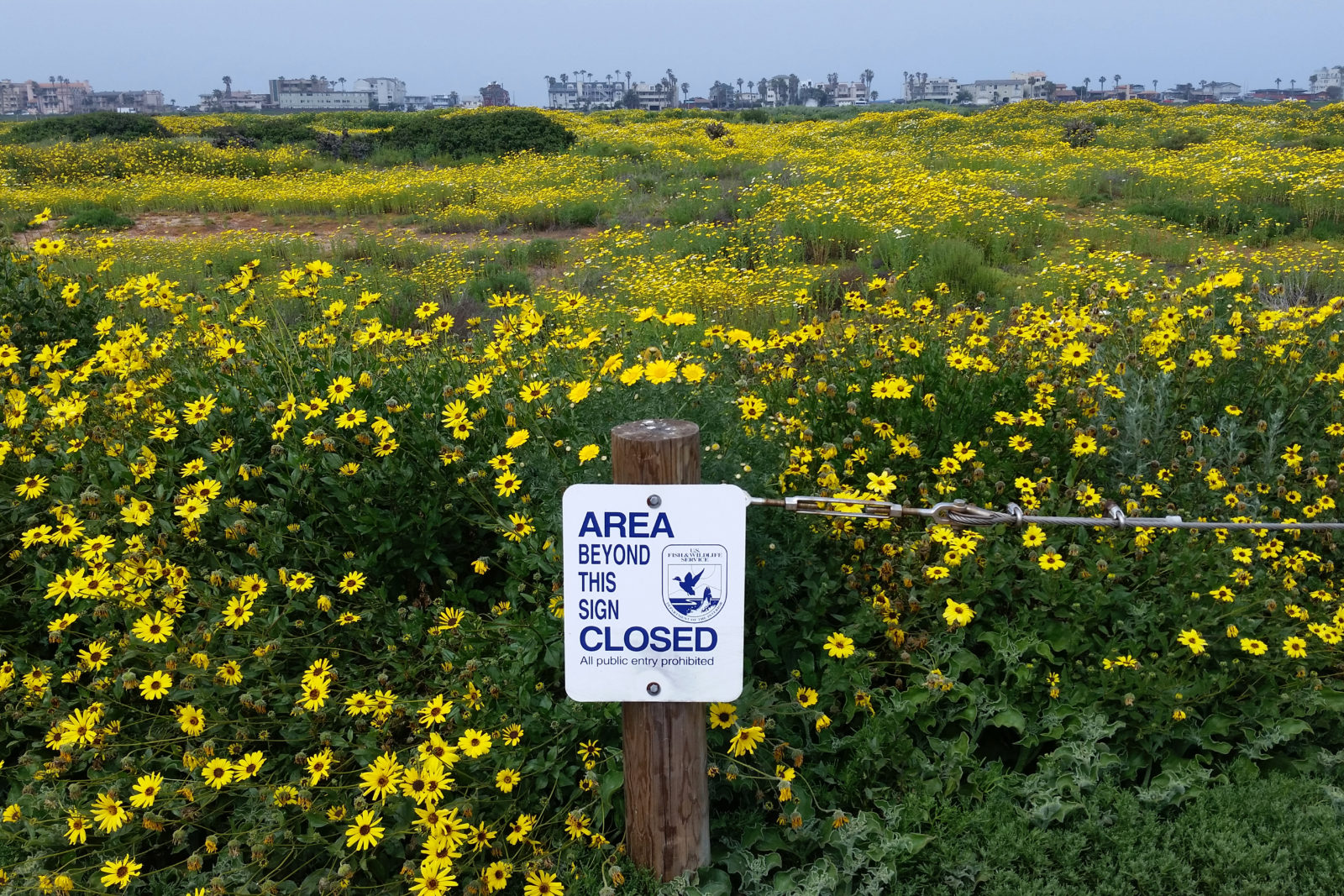Thanks to everyone who joined us April 8th for our hike into the wetlands of the Tijuana River Valley Estuary – the largest such river mouth in Southern California.
While the spring wildflower bloom was nothing short of spectacular, our hike comes at a criticial moment for estuaries managed by the National Oceanic and Atmospheric Administration (NOAA), now faced with draconian cuts from the Trump administration to NOAA coastal management funds.
While a variety of agencies like California State Parks, the U.S. Navy and the U.S. Fish and Wildife Service manage entities within the reserve, overall funding comes from NOAA, which manages 28 different National Esturary Research Reserves (NERRS) around the nation.
These are areas crucial for conservation, recreation, and wetland management. Natural wetlands and estuaries not only provide and protect wildlife habitat, they also play a significant role in cleaning water and runoff before it enters the sea. Estuaries and wetlands also protect inland areas from storm surges during hurricanes and severe weather events, and support fish and wildlife and local economies.
Unfortunately, the Trump administration’s budget would eliminate NERRS altogether, including the Tijuana River Estuary, with cuts of up to $250 million in targeted NOAA grants and programs supporting coastal and marine management, research, training and education. This would effectively be the end.
For reference, last week’s cruise missile strikes on the Shayrat Airbase in Syria cost about $93 million in hardware and facilitation by the U.S. Navy.
Congress needs to hear from us – right now – so that elected officials can questions, act on evidence, grandstand, draw media attention and make the risks of the proposed cuts to the Tijuana River National Eestuarine Research Reserve clear to all.
According to Chris Peregrin with California State Parks, the Tijuana River Estuary:
- Welcomed over 75,600 visitors in 2016, making it a significant destination for outdoor recreation and tourism in San Diego, and a boost to the South Bay economy.
- Offered over 2,000 contact hours of science-based training on coastal management issues, reaching over 1,600 students in the process.
- Captured and cleaned approximately 40,000 cubic yards of sediment and solid waste flowing in the Tijuana River before it could reach the sea, further protecting the health of our oceans and beaches from additional pollution.
- Provided a refuge to over 320 bird species while protecting the nesting ground for six species of birds designated as Threatened or Endangered under the 1973 Endangered Species Act (ESA).
These are measurable benefits to the environment, and to the communities and quality of life of the South Bay – they could all be lost by the stroke of a very ignorant pen. Contact your congressional representatives and urge them and their colleagues in Congress to reject the Trump administration’s proposal to drastically cut funding to NOAA and eliminate the NERRS program.

Tijuana Slough National Wildlife Refuge photos © 2017 Tommy Hough, all rights reserved.

